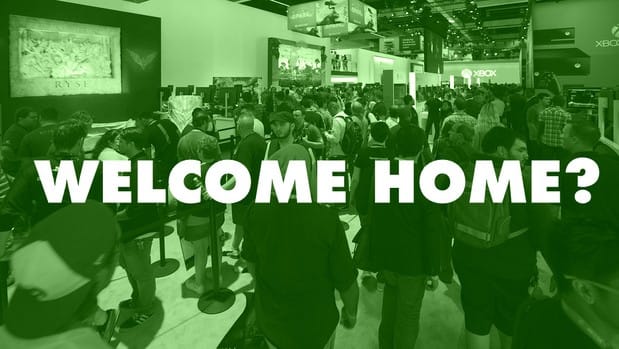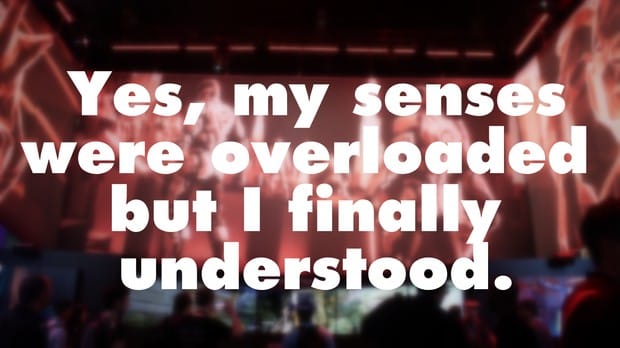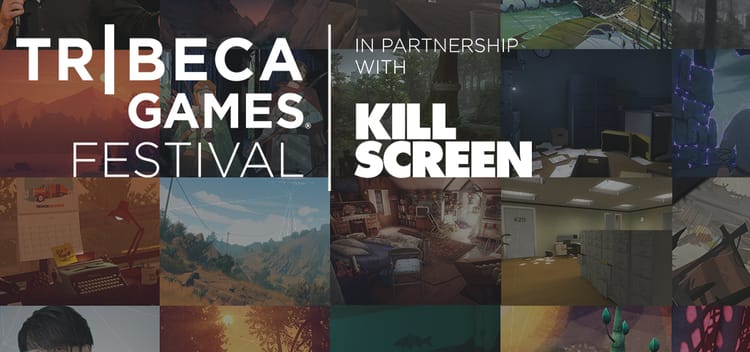In defense of shooting people in the face
It’s 9 a.m. and I’m standing in line. The last time I saw so many people snaked around the block, I was a teenager waiting for Avail tickets. Now that I live in New York, my abhorrence of lines has heightened to a profound degree. This doesn’t stem from an undergirding sense of cool (I mean, I ruminate on videogames all day), but more from a mantra one develops to stay sane after years of living in the city: There’s nothing good enough to wait in line for.
And yet, here I am on South Figueroa with hundreds, thousands of others, waiting outside for Microsoft to open the doors to USC’s Galen Center. I will be ushered inside, assigned a seat so small that it cramps my legs ten minutes into the presentation of the Xbox One, and spend the remainder of the press conference by the concession booth, watching characters unknown and unremembered as they are slaughtered one-by-one. They will have their throats gouged, faces indented, and screams ignored as one Microsoft executive after another will announce the new slate of Xbox One games. Welcome to E3.

This is my sixth Electronic Entertainment Expo and each year, somehow to my surprise, is roughly the same. It is an event of unparalleled noise and confusion. Imagine a casino with gas-powered slots running on full-tilt for three days. Then there’s the neon—oh, the neon!—of the brightest hue, polluting every untainted corridor. When philosopher Theodor Adorno lamented neon’s “false luminosity,” he was clearly envisioning Xbox greens and PlayStation blues.
The psychic toll is incalculable.
And while EA decided not to arm their massive booth with a thundering subwoofer to show off Battlefield 4 as in years past, their press conference did feature the lovable FIFA-fan Drake and a very amiable Dana White, president of Ultimate Fighting Championship, who said he wanted to gamers to know what it’s like “to get punched in the face.” (I took notes.) The psychic toll is incalculable.
Naturally, the common refrain from E3-hardened critics and commentators after the event each year is complete and utter exhaustion and despair. “E3 killed my desire to play games,” one critic wrote of last year’s affair. This physical discomfort and mental weight takes on a metaphorical significance as well. Games continue to be mired in the power fantasies of yesteryear, fail to showcase their diversity as a medium, refuse to, frankly, “grow up.” And in years past, this would have been my complaint too, while I washed my hands of the whole mess and jetted back the East Coast with my tail between my legs.
But something different happened this year. Yes, my senses were overloaded, as to be expected, but I finally understood. Let me explain.

There is a tendency among older game critics to expect “more” from games. The prevailing argument goes something like this. There are too many games about shooting people in the face. “The industry” should stop making games about shooting people in the face. Games need less weapons and more characters, experiences, and perspectives. I am a proponent of this school. In fact, I started Kill Screen precisely to advocate such positions.
“None of you want any of us to have a good time just ’cause you never did.”
But.
I also remember what it was like to be a 14-year-old freshman at an all-boys high school. We had a T1 internet connection. We also had Quake. And so each afternoon, while Dr. Schmiedekamp holed himself away to do whatever a high school teacher of computer science does at 3 p.m., we alit the hellish wasteland of unknown namesake, bunny-hopping and strafe-jumping to our hearts’ content. It was that Quake-infested part of my calcified marrow that stirred quietly, and then loudly, as I walked the floor of the Los Angeles Convention Center. If I was that gangly first-year, I would have loved E3.
Clearly and happily, I am not a teenager anymore. But those who’ve been playing games for two decades or more must acknowledge that with age comes to the tendency to dismiss our raucous past as adolescent indiscretions. When a teenage girl at a Rolling Stones chastises the suspended adolescent/ad exec Don Draper on Mad Men, “None of you want any of us to have a good time just ’cause you never did,” Don responds with the uncharacteristic voice of an adult: “We’re worried about you.” Fans of the show will note that Don’s parental word showed the one thing Don tries so desperately avoid: age. And so it goes that we deem the Roman bloodlust of Ryse as something to grow out of, rather than a reminder of the anarchic roar of youth.

And yes, E3 boasts an air of desperate intensity, of Gil the Salesman pleading for a lick of the shiny, brass ring. This is a commercial event after all, but, again, that blare and snarl of the convention floor is a consequence of teenagedom. Jennifer Senior’s excellent New York feature on why we never leave the “sentient madness” of teens explains why via radical changes in our brain chemistry:
The prefrontal cortex has not yet finished developing in adolescents. It’s still adding myelin, the fatty white substance that speeds up and improves neural connections, and until those connections are consolidated—which most researchers now believe is sometime in our mid-twenties—the more primitive, emotional parts of the brain (known collectively as the limbic system) have a more significant influence. This explains why adolescents are such notoriously poor models of self-regulation, and why they’re so much more dramatic—“more Kirk than Spock,” in the words of B. J. Casey, a neuroscientist at Weill Medical College of Cornell University.
That time period is remembered with such mania, because we were literally crazy. Teens are becoming their selves for the first time. We felt everything more.
Of course, Senior goes on to document how dangerous those impulses can be and how teenagers live in a constant state of fear. Moreover, Senior’s worry, echoed by researchers, is that failure to learn how to cope may carry consequences for later life. It could be easily argued that this explains the state of big-budget games with disturbing clarity—that clinging to each Call of Duty only suspends our collective maturation as game players.
But perhaps something different is at work. Games are entering their first, true generational cycle and while the endless march of space marines and ax-wielding mages could be considered a sign of metastasized orthodoxy on a billion dollar scale, a more charitable reading is thus: that segment of games will never grow. And that’s ok.
“That” segment of games will never grow. And that’s ok.
It’s ok because we were all teens once. That is the moment in life when we are the least powerful. We possess the intellect to understand the structure of the world but none of the power to actually change it. We are frustrated, febrile, and paralyzed. And many, like me, turn to games as the one place where we could feel whole, where we could escape.
The apostle Paul, no stranger to first-person shooters, quipped: “When I was a child I spoke as a child I understood as a child I thought as a child; but when I became a man I put away childish things.” Such is the way of games of course. As we age, we yearn for depth and meaning. I saw those on display in forthcoming titles like the melancholic Rain and the delirious Hohokum. Yet the makers of those titles were surely weaned on the same violent forebearers as those making modern shooters and it is exactly those experiences, holed away playing DOOM and Counter-Strike until reticules were retinally burned as after-images, that fuel their creativity now…if only in reactive form.
But that games are expressing themselves in new and profound ways is not an argument that less “cultured” spheres of gamedom should be severed. Contextualized, of course, but not abandoned. It wasn’t so long ago that the whole of games, good and bad, labored under the same global misapprehension. E3 may not always be the best foot forward, but it’s one whose necessity I am finally willing to accept.
Or at least wait in line for.
Microsoft booth photo via Caleb Sconosciuto. AMD Eyefinity booth photo via AMD Global. Counter-Strike photo via Silicon Gulf.



